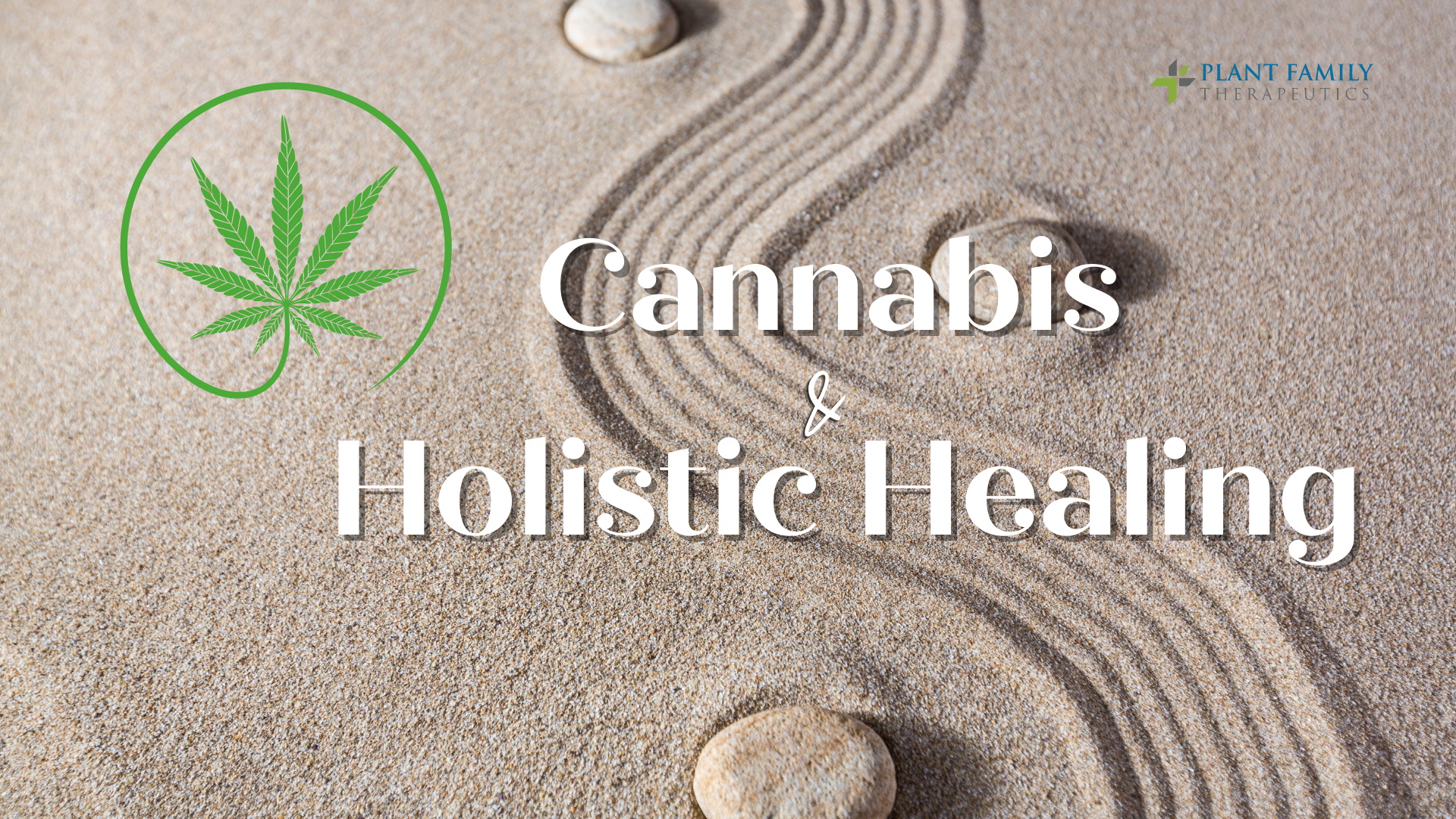This website requires you to be 21 years or older to enter. Please confirm your age below to continue.

In places like China and India, holistic medicine has been practiced for thousands of years, but holistic cannabis treatment is a newer term that’s gaining popularity as cannabis prohibition ends. Holistic medicine takes an all-encompassing approach to a person’s health, with the goal of balancing all aspects of the mind, body, and spirit, and cannabis is being used to enhance the practice. To put it another way, cannabis allows the patient to think about how the whole plant can benefit the whole person.
The first mention of holistic medicine dates back to the 4th century B.C. when Socrates advised that treating one area of the body would not have the same positive effects as treating the whole body. Holistic treatment focuses on an integrated balance rather than individual ailments therefore, it only makes sense to incorporate cannabis since a healthy endocannabinoid system (ECS) signifies a body in homeostasis (balance).
According to current medical trends, an “integrated, holistic approach” is the best way to care for patients. Doctors are in a better position to care for and treat their patients in body, mind, and spirit by combining holistic or alternative medicine with a patient-focused and data-driven approach. In other words, doctors that practice integrated medicine will no longer simply treat your disease or symptoms but will instead provide treatment tailored to your specific health needs.
The cannabis plant is one of the most holistic, natural healers in the world. It’s been revered for centuries before modern pharma criminalized the use and production of it. Functional and comprehensive medical methods make cannabis a natural ally to help patients. By investigating the root cause of the disease rather than focusing on individual symptoms, cannabis has the potential to provide many healing physical and mental benefits, especially when it is combined with other forms of alternative therapies, such as yoga, nutritional therapy, and acupuncture. However, cannabis is also widely used as alternative medicine.

The various applications of cannabis allow patients to better control their health and understand which parts of their bodies need healing the most. What is considered a mental condition, such as anxiety, may actually cause physical discomfort. See when you feel stressed, your body releases cortisol, an acidic chemical, which causes your body to have an inflammatory response. When your body becomes inflamed, you will suffer from various other diseases, from minor aches to major and complicated issues. Therefore, a holistic approach that takes into account the relationship between mental and physical health (assisted by cannabis) may be the key to treating the causes and symptoms of diseases.
One aspect that makes holistic cannabis medicine unique is that it provides health practitioners with a perspective to consider how past trauma and adversity affect a person’s long-term physical and mental health. Research has shown that people with a higher incidence of childhood trauma or stress have a higher chance of developing COPD and the frequency of hospitalizations is higher. Other data suggests that children’s high stress levels can lead to an increased risk of cardiovascular problems.
Patients have more liberty with holistic cannabis medicine since they can customize their treatment to work specifically for them. Instead of dealing with pharmaceuticals that can have side effects (which can be worse than the actual symptoms) that are only handled with further prescriptions, a person can carefully experiment with cannabis applications and dose without fear of being judged or feeling pressure.
A person must take time to discover out what works for them based on their condition and the biological makeup of the cannabis product in terms of cannabinoid and terpene ratio. Cannabis differs from medicines in that it allows for more customization in terms of addressing various aspects of the body and mind. While a terpene (aromatic component) like myrcene can help with sleep and relaxation, high-THC percentages can be detrimental in some circumstances. However, by considering what a person requires to be well and balanced, such as better sleep, less anxiety, less chronic pain, and more energy, they can achieve their goals.
When used correctly, cannabis is an effective and safe treatment for a vast range of conditions. Suggestions for proper use require the help of a person who has professional education in both cannabis and healthcare to make informed, safe, and educated recommendations to the public. This is where an educated cannabis consultant comes in.
Visit Plant-Family.com for more education. You may also walk-in or make an appointment with our certified medical cannabis consultant, who can help guide you through your healing journey.
References
Anda, R. F., Brown, D. W., Dube, S. R., Bremner, J. D., Felitti, V. J., & Giles, W. H. (2008). Adverse childhood experiences and chronic obstructive pulmonary disease in adults. American journal of preventive medicine, 34(5), 396–403. https://doi.org/10.1016/j.amepre.2008.02.002
Clarke, T., Black, L., Stussman, B., Barnes, M., et. al. (2015) Trends in the use of complementary health approaches among adults: United States, 2002-2012. National health statistics reports, 2015; 79, https://www.cdc.gov/nchs/data/nhsr/nhsr079.pdf
Corp N, Jordan JL, Croft PR (2018) Justifications for using complementary and alternative medicine reported by persons with musculoskeletal conditions: A narrative literature synthesis. PLoS ONE 13(7): e0200879. https://doi.org/10.1371/journal.pone.0200879
Frass, M., Strassl, R. P., Friehs, H., Müllner, M., Kundi, M., & Kaye, A. D. (2012). Use and acceptance of complementary and alternative medicine among the general population and medical personnel: a systematic review. The Ochsner journal, 12(1), 45–56. https://pubmed.ncbi.nlm.nih.gov/22438782/
Huang, E. C., Pu, C., Chou, Y. J., & Huang, N. (2018). Public Trust in Physicians-Health Care Commodification as a Possible Deteriorating Factor: Cross-sectional Analysis of 23 Countries. Inquiry : a journal of medical care organization, provision and financing, 55, 46958018759174. https://doi.org/10.1177/0046958018759174
Lin, P. J., Peppone, L. J., Janelsins, M. C., Mohile, S. G., Kamen, C. S., Kleckner, I. R., Fung, C., Asare, M., Cole, C. L., Culakova, E., & Mustian, K. M. (2018). Yoga for the Management of Cancer Treatment-Related Toxicities. Current oncology reports, 20(1), 5. https://doi.org/10.1007/s11912-018-0657-2
National Center for Complementary and Integrative Health. (2015). National study reports shifts in Americans’ use of natural products. NCCIH. https://www.nih.gov/news-events/news-releases/nationwide-study-reports-shifts-americans-use-natural-products
Tabish S. A. (2008). Complementary and Alternative Healthcare: Is it Evidence-based?. International journal of health sciences, 2(1), V–IX. https://www.ncbi.nlm.nih.gov/pmc/articles/PMC3068720/
Vickers, A. J., Vertosick, E. A., Lewith, G., MacPherson, H., Foster, N. E., Sherman, K. J., Irnich, D., Witt, C. M., Linde, K., & Acupuncture Trialists’ Collaboration (2018). Acupuncture for Chronic Pain: Update of an Individual Patient Data Meta-Analysis. The journal of pain, 19(5), 455–474. https://doi.org/10.1016/j.jpain.2017.11.005